Ambrobene syrup is created for the treatment of respiratory diseases. It is available in a convenient dosage form that is suitable for children. But the drug has both indications and contraindications, so it should be used only after consulting a pediatrician.
Material Content:
- 1 Syrup Ambrobene: release form, composition
- 2 Pharmacological properties and indications for use
- 3 At what age can children be given
- 4 What cough to take syrup: with dry or wet
- 5 Instructions for use for children
- 6 How to use syrup for inhalation
- 7 Drug Interactions with Other Drugs
- 8 Proper storage conditions for syrup
- 9 Contraindications, side effects
- 10 Ambrobene syrup or tablets: which is better
- 11 Analogs
Syrup Ambrobene: release form, composition
Syrup for children Ambrobene as an active substance contains 0.3 g of Ambroxol.
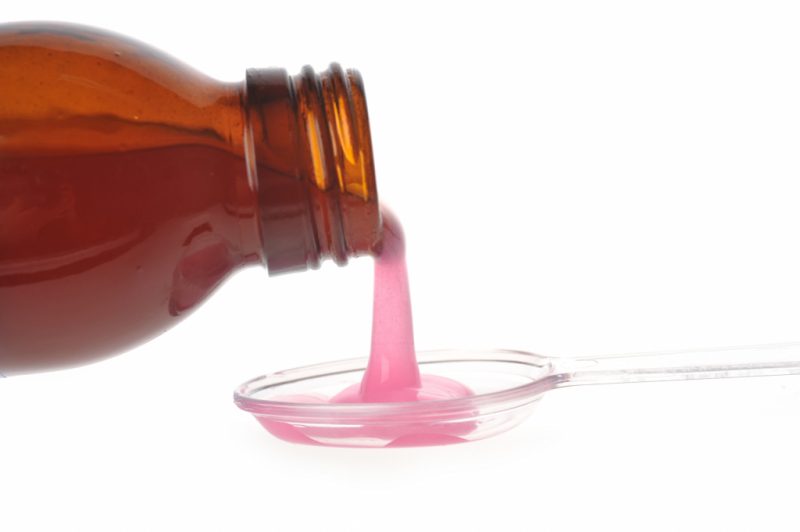
It is complemented by:
- sorbitol;
- propylene glycol (provides viscosity);
- saccharin (adds flavor);
- water (allows the medicine to remain liquid);
- raspberry flavoring (responsible for the taste component, so that children do not give up the drug).
The medicine has no color, but may be a yellowish tinge. The smell resembles raspberry jam, and the consistency is a little sticky due to the sugar in the composition. The syrup is sold in glass bottles of 100 ml. The lid has a thread that easily closes and opens when required. This mechanism allows the tool not to deteriorate during storage. A measuring cap is included in the kit for the drug, which allows you to accurately observe the dosage.
Pharmacological properties and indications for use
Ambrobene Cough Syrup combines several medicinal effects.
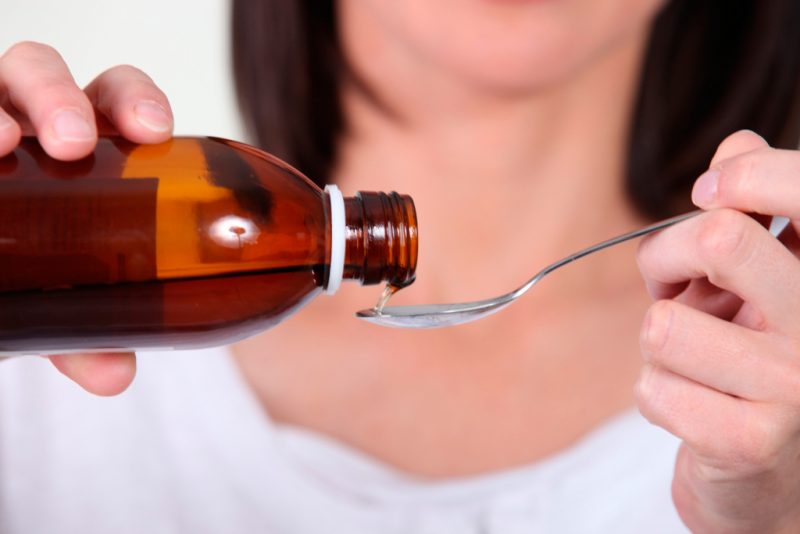
These include:
- mucolytic (liquefaction of sputum);
- expectorant (helps to remove the pathological secret of the bronchi);
- secretory (enhances the secretion of mucus by the bronchi, which helps to cleanse them);
- surfactant-forming (to avoid irreversible changes after recovery).
The properties of the drug are due to the action of the active substance - Ambroxol (a metabolite of bromhexine). It also stimulates lung maturation when they are affected in children born prematurely. The drug prevents the destruction of surfactant, and also triggers its synthesis.
Based on the medicinal effects, Ambrobene is prescribed in cases when:
- the baby was born prematurely, which led to the development of distress syndrome;
- there is an acute respiratory disease associated with sputum retention or insufficient functioning of the secretory cells of the bronchi;
- chronic pathology of the respiratory system goes into the stage of exacerbation or causes discomfort to the patient.
The action of the syrup is aimed at alleviating the condition of the child, improving the discharge of sputum or the maturation of lung tissue.
At what age can children be given
A dosage form in the form of a syrup allows you to prescribe the drug to children from the first days of life. The risk that the child will choke on the liquid is very low, since his type of nutrition implies just such an aggregate state of substances that enter the stomach. The drug is diluted with water or given along with breast milk.
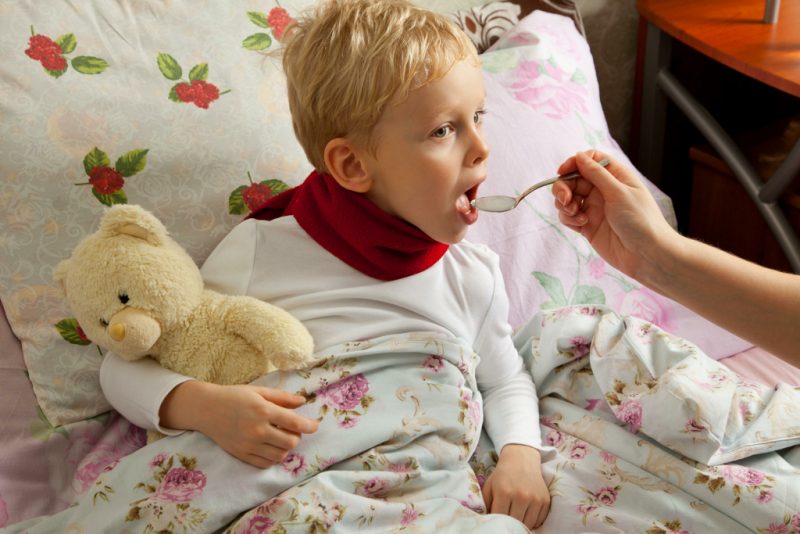
Features of the functioning of the gastrointestinal tract in children imply the best absorption of active substances in liquid form. Therefore, it is easier for them to take everything necessary for the treatment of the disease from the syrup.
What cough to take syrup: with dry or wet
The decision on which cough to use the medicine should be based on the action of the active substance. Ambrobene dilutes sputum, and also stimulates the secretion of the bronchi, which increases its volume. So the lungs are cleaned of the bacteria and viruses that caused the disease.
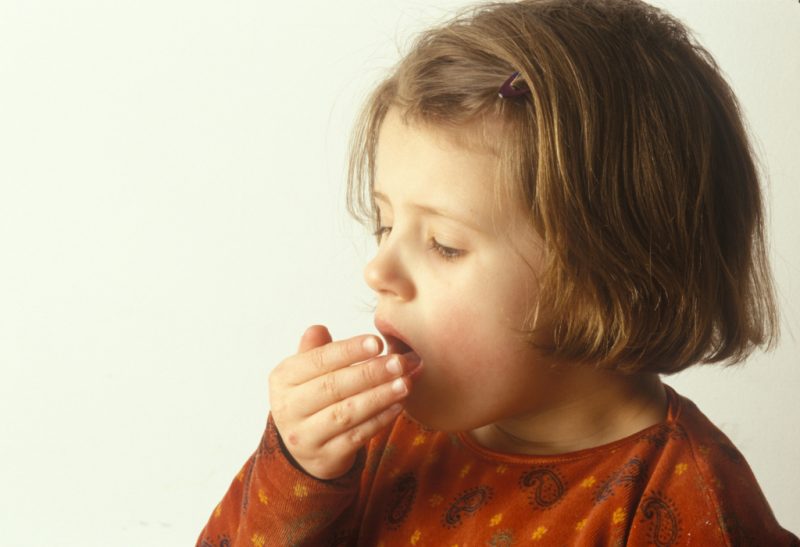
In the presence of a wet cough, excessive synthesis of mucus will aggravate the patient's condition. Attacks will happen more often, and the amount of sputum will increase dramatically. Therefore, Ambrobene is prescribed only for dry mucous membranes of the bronchi or the presence of a viscous secretion.
An unproductive cough creates an environment for the reproduction of bacteria, and also does not bring relief to the patient.
When using the syrup, it goes wet with a moderate amount of sputum that can be easily separated. This contributes to a speedy recovery, and also prevents the development of complications.
Instructions for use for children
If the child is under 6 years old, only the syrup form is suitable for oral administration. The fluid texture and sweet taste help make the treatment safe and enjoyable. Complete printed instructions for use are located inside the box. Its abridged version is printed outside. It provides general recommendations and averaged numbers. The individual dosage prescribed by the doctor may differ from that indicated on the drug.
Dosage for children
The amount of substance used to treat the child depends on his age and condition.

Average dosages are:
- up to 2 years - 2.5 ml twice a day (half a cup that comes with the kit);
- 2-6 years - 2.5 ml three times a day;
- From 6 to 12 years - 5 ml (full measuring cup) 2-3 times a day, depending on the severity of the manifestations;
- from 12 years and older - 10 ml (2 doses from a glass of medicine) three times a day for the first three days, and then reduce the frequency of administration to 2 times a day.
How to take the drug for a specific patient, the doctor decides after a full-time examination and diagnosis. According to indications, the dosage may be above average or below it, depending on the severity of the problem and the patient's condition.
How to take syrup: before or after a meal?
Ambrobene does not change its properties depending on the intake - before meals, after or during. But because of the sweet taste, it is better not to combine the treatment of syrup and food.A child may refuse to eat wholesome but less sweet foods.

On the other hand, after eating, a person does not feel the need to eat something. Therefore, after eating, the child may refuse medicine because of a feeling of satiety. It is worth giving children medicine an hour before meals. Then its sweet taste does not interfere with dinner, and the drug will be positively received by the baby.
How to use syrup for inhalation
To understand whether it is possible to use drugs in the form of syrup for inhalations, it is worth referring to their composition. Most dosage forms for children contain sugar and flavors. This allows the child to more easily perceive the drug and use it without resistance. Because of this, they have a viscous and sticky consistency.
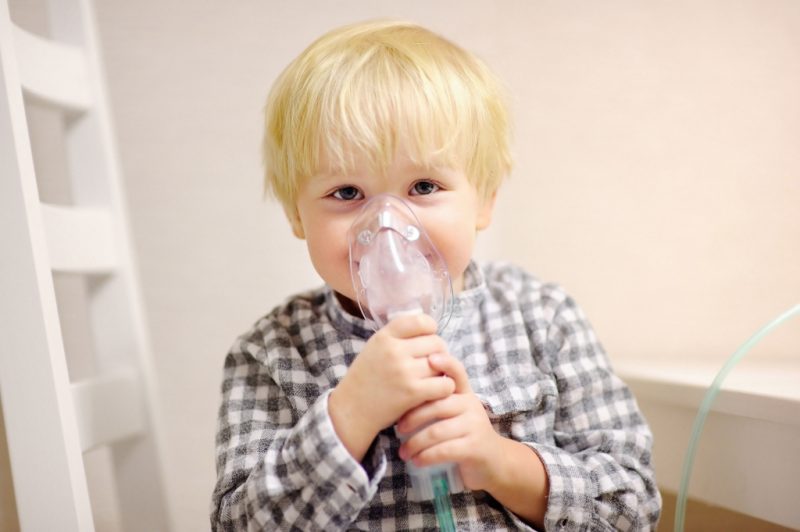
If you pour such a tool into the inhaler, the device will deteriorate. Dissolved sugar will settle on the evaporating elements and block their work. Therefore, for this method of use, special dosage forms are synthesized.
These include a solution for inhalation. Its use is possible for any devices, except steam. Before use, the concentration of the solution is reduced by half, diluting it with saline. This does not change the properties of the drug, but lengthens the time of evaporation, which means exposure to the bronchi of the active substance. You need to breathe during inhalation calmly, without deepening the breath.
If the child is sick with bronchial asthma, bronchodilator drugs should be taken before inhalation. This will prevent the development of possible complications.
The dosage of the solution and the frequency of repeating the procedures depends on the age of the patient:
- from 0 to 2 years - 1 ml of the drug is diluted, inhalations are carried out 1-2 times a day;
- from 2 to 6 years - 2 ml of the drug according to 1-2 procedures per day;
- older than 6 years - 2-3 ml of the drug is given 1-2 times a day, depending on the disease and the condition of the patient.
When inhaled, the medicine will enter directly into the respiratory tract, which enhances the effect of it and accelerates its onset. This is often required for young children with bronchitis that threatens life and health.
Drug Interactions with Other Drugs
The use of both Ambrobene and antitussive drugs is not recommended.

Their actions contradict each other, which leads to a deterioration in the patient's condition. A syrup stimulates sputum production, and medications that block bronchial receptors prevent it from being pushed out. Because of this, an accumulation of pathological secretion occurs in which bacteria multiply. Because of this, the disease is delayed and progresses.
Admission Ambrobene enhances the action of antibiotics, contributing to their accumulation in the blood. This can lead to an overdose of the drug. Therefore, the amount of drugs used in such situations should be calculated individually.
Proper storage conditions for syrup
Medicinal substances should be stored in places where children do not have free access. The child is not able to correctly calculate the dosage, so unauthorized use of the drug can provoke the appearance of side effects.
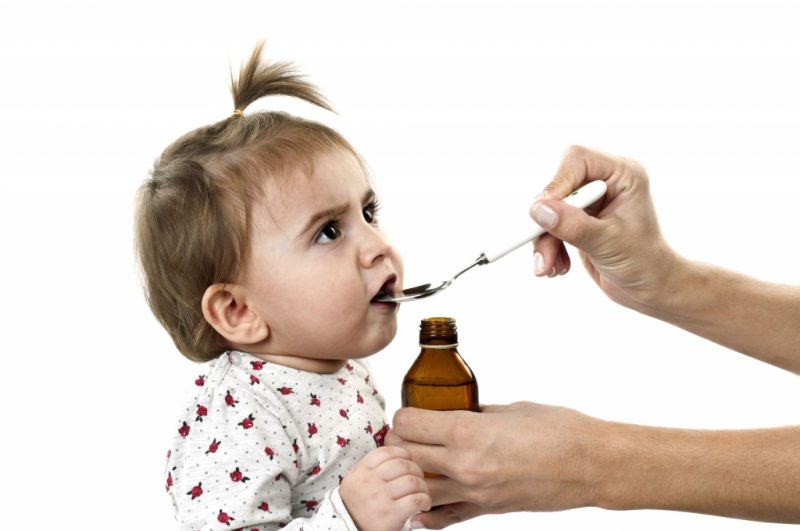
Under the influence of direct sunshine, most drugs break up, which is why their effectiveness is significantly reduced. Therefore, the syrup bottle should be left in a dark place. The room temperature should not exceed 25 degrees and not fall below 5. Otherwise, the properties of the medicine may change.
Contraindications, side effects
The drug is forbidden to use in the presence of allergic reactions to substances in its composition. Also, it is not used in the first 12 weeks of pregnancy.

Other contraindications include:
- glucose malabsorption;
- functional fructose intolerance;
- sucrose malabsorption.
There are conditions in which the appointment of Ambrobene is possible, but only under the close supervision of the attending physician.
These include:
- breastfeeding;
- ciliary dyskinesia syndrome (lack of movement of the cilia of the epithelium of the respiratory tract);
- peptic ulcer in the acute stage;
- pathology of the liver and kidneys.
For such patients, the dosage is selected individually, taking into account the characteristics of their diseases and well-being.
With intolerance to the components of the drug, as well as non-compliance with contraindications, the occurrence of side effects is possible.
These include:
- Quincke's edema, urticaria, shortness of breath;
- general weakness, headaches;
- low-grade fever;
- anaphylactic shock;
- pain in the abdomen;
- dyspeptic disorders (vomiting, diarrhea, constipation, flatulence);
- rhinorrhea;
- violation of urination;
- exanthema.
When the first signs of side effects appear, you should stop taking the drug and consult a doctor to select a similar remedy.
Ambrobene syrup or tablets: which is better
The tablet form of the drug implies the age of the patient older than 6 years. This is due to the fact that children can choke or inhale a solid object. Therefore, solutions and syrups have been developed for them. Liquid dosage forms are easier to dose. An individual amount can be selected for them, which cannot be done with tablets or dragees, where the concentration of the active substance used is always fixed.
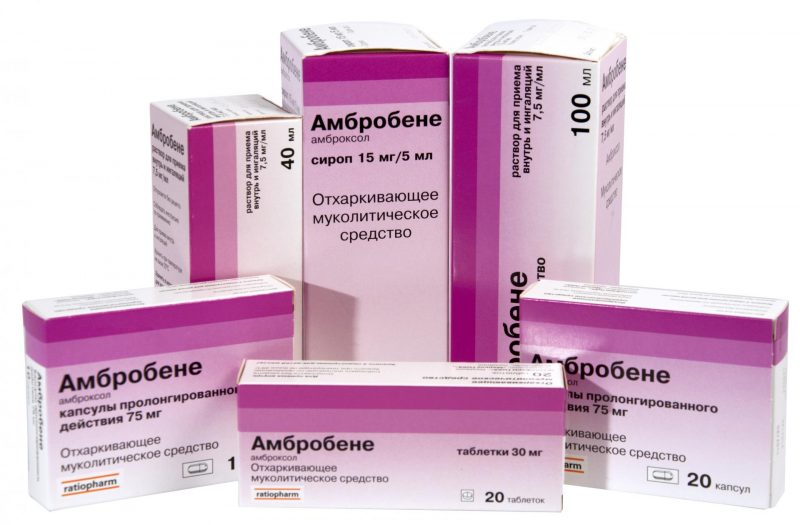
However, the solutions do not have a pleasant taste and are reluctant to drink by children. Syrups are made taking into account the taste preferences of small patients, so there are usually no problems with their use.
For young children only syrups are suitable.
An older child is able to choose independently what is more convenient for him to take.
Analogs
To drugs with a similar effect include not only drugs based on ambroxol. This list includes other powerful mucolytics.
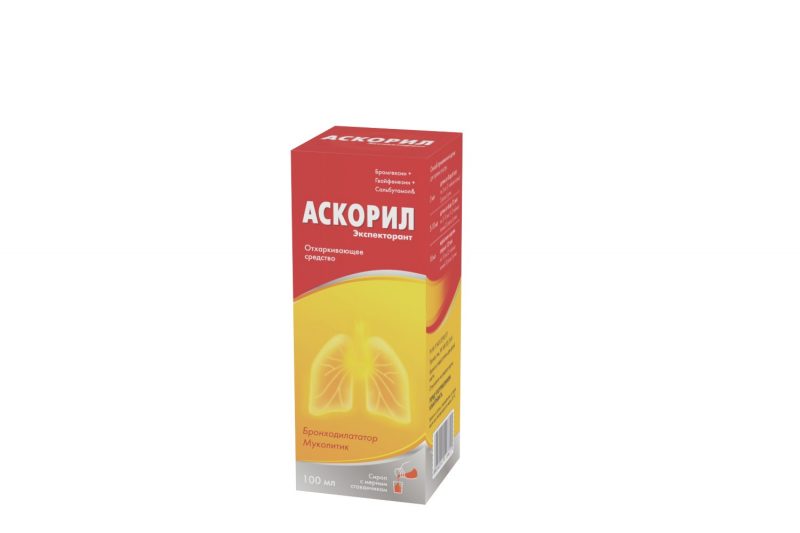
A similar medicinal effect is possessed by:
- Ascoril;
- “ACC”;
- "Atsestin";
- "Bromhexine";
- "Acetylcysteine";
- "Bronchobos";
- "Bronchosan";
- "Sinupret";
- Pulmozyme;
- Fluimucil;
- "Bronchostop" and others.
The selection of a drug for replacement is carried out by the attending physician in accordance with the age of the patient, the presence of concomitant diseases and the individual characteristics of the body.
Syrup Ambrobene is considered an effective remedy for dry cough. It helps accelerate recovery and facilitates the discharge of sputum. It is prescribed to children from the first days of life, but before using it is necessary to familiarize yourself with contraindications and consult a specialist.












